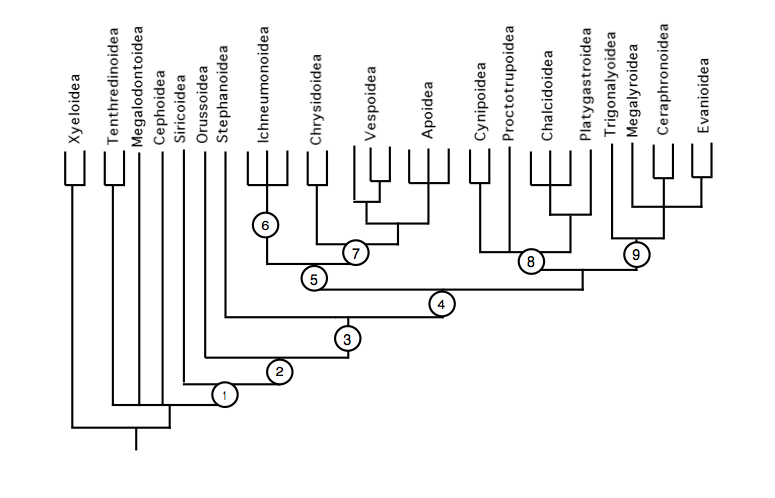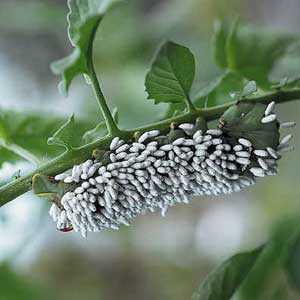The Jewel Wasp
Biology 342 Fall 2010
Briana Patton and Lisa Schomaker
The Evolution of Parasitism
Parasitism in the Hymenopteran order is believed, based on fossil evidence, to have appeared some 160 million years ago. The precursor species likely "specialized in larval feeding within tunnels in wood and at least partly on fungi." The ability to "target" oviposition was probably already established throughout the order, but targeting towards animal hosts had not yet developed. The ancestral state of parasitism among wasps was one of exoparasitism in which eggs were laid on the exoskeleton of or near the host species.. The ability to paralyze the host with specialized venoms also appeared very early on in the development of parasitism as has been deduced by its widespread presence in Hymenopteran suborders. Host controlling behaviors such as we see in Ampulex compressa, however, evolved much later. (Whitfield 1998)

Figure 2. The proposed phylogeny for the evolution of parasitism among Hymenopteran species. Numbered nodes represent morphological synapomorphies (relating to parasitism) for the diverging clades (for descriptions, see Whitfield, 1998).
The jewel wasp is a "Sphecid" wasp, a member of the Ampulicidae family. This family belongs to the Apocrita suborder of Hymenoptera (see figure 2), the suborder containing the greatest surviving diversity of parasitoid species. Most wasps in this family paralyze the host by "multiple, variable stings"(Gal et al 2005), transport the host to a pre-constructed burrow, and lay a single egg on the host's abdomen. The evolved intricacies of the parasitoid behavior vary between species. For example, the ability of the jewel wasp to induce hypokinesis (slow, controlled movement) in the host organism is a unique adaptation.
The Targets
While the jewel wasp preys on cockroaches, parasitic wasps attack many species of arthropod larvae ranging from moths to aphids. Caterpillars that have been infested are nearly unrecognizable come hatching time (see figure 3). Despite their merciless behavior towards fellow bugs, parasitic wasps are considered, among humans, to be incredibly beneficial species because of their propensity to parasitize and kill common crop pest species.

Figure 3. Hornworm covered in parasitoid pupae. From: http://www.veggiegardener.com/identifying-beneficial-insects/